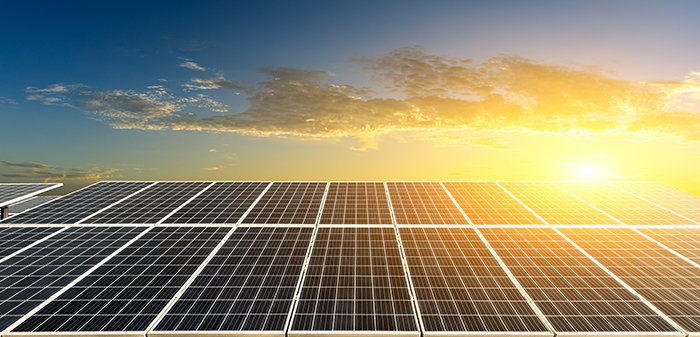
Currently, there are several main types of mainstream solar cell technologies:
1. Crystalline silicon solar cell technology
This is currently the most common solar cell technology, which includes two major categories: mono-crystalline silicon and poly-crystalline silicon.
Mono-crystalline Silicon (Mono-Si): Panels produced from single silicon crystals offer higher efficiency (approximately 18%-22%), though they tend to be more expensive. The signature feature of Mono-Si panels is their black appearance with a uniform smooth texture on the surface.
Poly-Silicon (Poly-Si or Multi-Si): Panels made by multiple pieces of silicon crystals, slightly less efficient than mono-crystalline silicon (about 15-17%), and less costly. Poly-Si panels are usually blue in color and have a surface that looks like pieces put together.
2. Thin-film solar cell technology
Thin-film solar cells are made from one or more layers of thin solar panels materials .
Amorphous Silicon (a-Si): is a thin film solar cell technology that is less efficient than crystalline silicon (about 6%-8%), but can perform better in low-light conditions and at a lower cost.
Cadmium Tellurium(CdTe) : has a relatively high efficiency among thin-film technologies (about 10-16%), and can be mass-produced with a low cost.
Copper indium gallium selenide (CIGS): Currently considered to be one of the most promising thin-film technologies, with a efficiency up to 21% or more, but with relatively high costs and manufacturing difficulties.
3. High Efficiency solar cell Technologies
These technologies typically offer higher energy conversion efficiencies at higher costs and are mainly used in aerospace or centralized large-scale solar power plants.
Multi-Junction Cells: High efficiency is achieved by using multiple layers of solar panels material, each absorbing a different wave length of light. This technology may have efficiencies as high as 40%, but is very costly and is not typically used in residential or commercial solar systems.
4. Emerging and innovative technologies
As research progresses, new solar cell technologies are being developed, such as:
Perovskite Solar Cells: Novel materials using Perovskite structure with very high efficiency potential and low cost, but still in the laboratory research stage and not yet commercialized on a large scale.
In the U.S., the following technologies are mainly used for residential solar systems:
Crystalline silicon technology: including mono-crystalline silicon (Mono-Si) and poly-crystalline silicon (Poly-Si or Multi-Si). These two technologies are the most common solar cell technologies on the market today, with proven manufacturing processes, high energy conversion efficiencies, and reliable long-term performance.
Mono-crystalline solar cell: Mono-crystalline solar cell is renowned for their elevated energy conversion ratios, typically falling within the range of 18% to 22%. These panels possess the ability to generate a greater amount of electricity even in limited roof areas. Although they come with a higher initial cost, over the long term, they can offer enhanced power output thanks to their superior efficiency.
Poly-crystalline solar panels: Poly-crystalline solar panels have an efficiency span that is approximately between 15% and 17%. These panels are a cost-effective choice for households that are mindful of expenses. They are budget-friendly and serve as an economical option for those looking to save on costs.
The technology of thin-film solar cell: When compared to crystalline silicon panels, thin-film solar technology is not as widely employed in residential solar system. However, it finds its application in specific specialized circumstances. Despite its limited use in typical home setups, it plays a role in certain niche cases. Thin-film technologies (such as CdTe and CIGS) offer lower production costs and flexible applications, but are typically less efficient and take up more space.
Emerging technologies such as chalcogenide solar cells are also gaining traction as the solar industry grows, but they are not yet widely used in the home solar market.
In practice, the choice of technology usually depends on a home's energy needs, the condition of the roof, the budget, and preferences for efficiency and aesthetics.
Mono-crystalline solar panels are witnessing a surge in demand due to their remarkable efficiency and attractive outward look in the United States. However, the specific choice should be made in the context of local solar subsidy policies, energy costs, and the provider's products and services.







